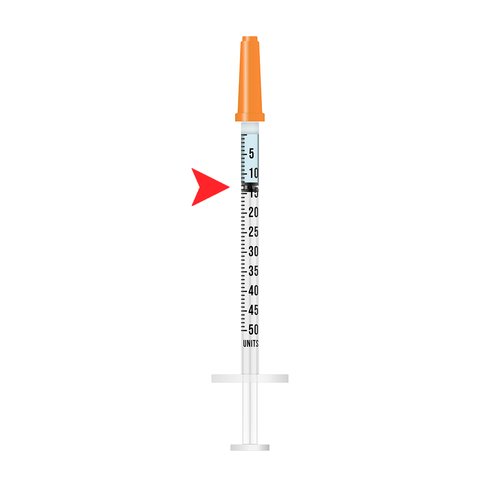Introduction to Semaglutide and Its Uses
Are you curious about semaglutide and how it can impact your health? This medication has gained significant attention in recent years, particularly for its role in weight management and diabetes care. As more people seek effective solutions to their health challenges, understanding the nuances of semaglutide becomes crucial. One common question that arises is: “20 units of semaglutide is how many mg?” If you’re navigating this complex landscape or considering starting treatment, knowing the answers to these questions can empower you on your journey toward better health. Let’s delve deeper into what makes semaglutide noteworthy and unravel all the details surrounding its dosage and administration.
Understanding the Dosage of Semaglutide
Understanding the dosage of semaglutide is crucial for its effectiveness. Semaglutide comes in a pre-filled pen, designed for easy self-administration.
Typically, the starting dose is often lower to help your body adjust. This gradual approach minimizes potential side effects while allowing you to gauge how well your system responds.
Dosages can vary based on individual needs and medical conditions. Factors like age, weight, and overall health play a significant role in determining the appropriate amount.
It’s also important to note that adjustments may be necessary over time. Regular follow-ups with your healthcare provider ensure that you’re receiving the optimal dosage tailored specifically for you.
Keeping track of how you feel after each injection can provide valuable information as well. Open communication with your doctor helps refine treatment strategies effectively.
Converting Units to Milligrams: Why It’s Important
When dealing with medications like semaglutide, understanding unit conversions is crucial. Dosing in units rather than milligrams can create confusion for patients and healthcare providers alike.
Semaglutide typically comes in a pen that dispenses medication in units. Knowing how to convert these units into milligrams helps ensure the correct dosage is administered. This accuracy can significantly impact treatment effectiveness.
Incorrect dosages may lead to suboptimal results or unwanted side effects. For instance, taking too little might not control blood sugar effectively, while too much could pose health risks.
For those on semaglutide therapy, familiarity with this conversion empowers better management of their condition. It promotes confidence and compliance during treatment by clarifying what each dose signifies in terms of active ingredients.
Recommended Dosage for Different Conditions
Semaglutide is primarily prescribed for type 2 diabetes management and weight loss. The dosage may vary based on individual needs and specific conditions.
For individuals with type 2 diabetes, the typical starting dose is often around 0.25 mg per week. This can be gradually increased to a maximum of 1 mg weekly, depending on how well the patient tolerates it.
When used for weight loss in adults with obesity, treatment usually begins at a lower dose as well—0.25 mg weekly. After four weeks, this may increase to up to 2.4 mg per week if needed.
It’s crucial to follow your healthcare provider’s recommendations closely since they will tailor the dosage based on factors like body weight and overall health status. Adjustments might also occur over time as treatment continues or if side effects arise.
Common Side Effects of Taking Semaglutide
Semaglutide can be a powerful tool for managing weight and blood sugar levels, but it’s important to be aware of potential side effects. Some users report gastrointestinal issues such as nausea, vomiting, and diarrhea. These symptoms are often temporary but can be uncomfortable.
Another common side effect is decreased appetite. While this may sound appealing to some, it might lead to inadequate nutrient intake if not managed properly.
Additionally, headaches and fatigue have been noted by several individuals starting the treatment. Staying hydrated and maintaining a balanced diet can help alleviate these feelings.
Less commonly, some people may experience allergic reactions or pancreatitis. Such conditions require immediate medical attention if suspected.
Monitoring your body’s response during treatment is crucial for safety and effectiveness when using semaglutide.
Tips for Properly Administering the Medication
Administering semaglutide correctly is crucial for its effectiveness. Always begin by washing your hands thoroughly. Cleanliness prevents infections and ensures a safe experience.
When preparing the dose, check the expiration date on the medication vial. Use only undamaged syringes to avoid complications during injection.
Choose an appropriate injection site each time—common areas include the abdomen or thigh. Rotate sites to reduce discomfort and skin irritation over time.
Hold the syringe at a 90-degree angle while injecting for optimal delivery of the medication. Press down gently but firmly, ensuring you’re not applying too much pressure.
After administering, dispose of used needles in a designated sharps container. This keeps your environment safe and reduces risks associated with needle exposure.
Stay consistent with timing; take your doses as prescribed without skipping days for best results.
Conclusion: Consult Your Doctor Before Starting Treatment
Starting a treatment plan involving semaglutide is an important decision that should never be taken lightly. It’s crucial to have a thorough understanding of how this medication works and the appropriate dosages for your specific condition. Always consult your doctor before beginning any new treatment. They can provide personalized guidance based on your health history and current medications.
Your healthcare provider will help you navigate questions like “20 units of semaglutide is how many mg?” while ensuring you’re well-informed about what to expect from your treatment journey. Open communication with your physician ensures safety, efficacy, and peace of mind as you work towards better health.

Leave a Reply